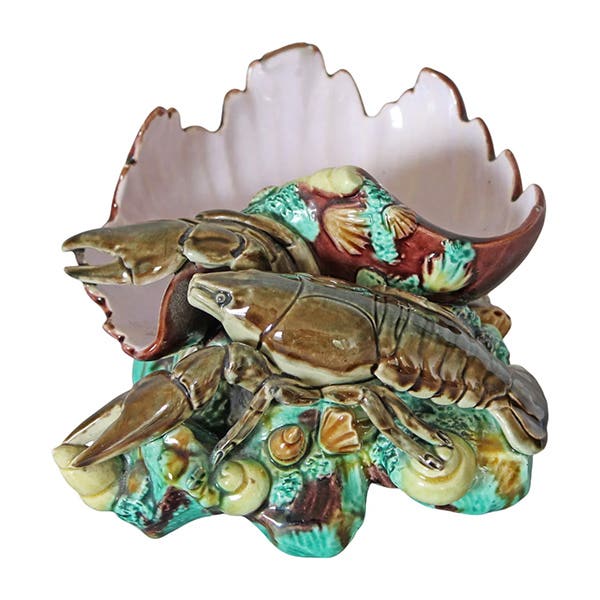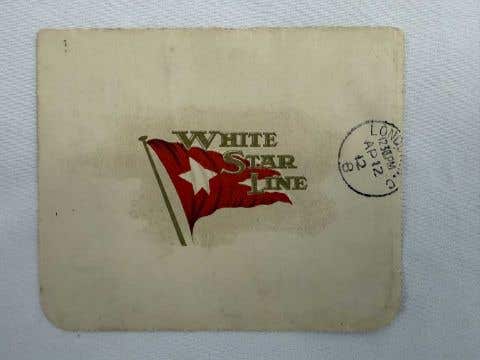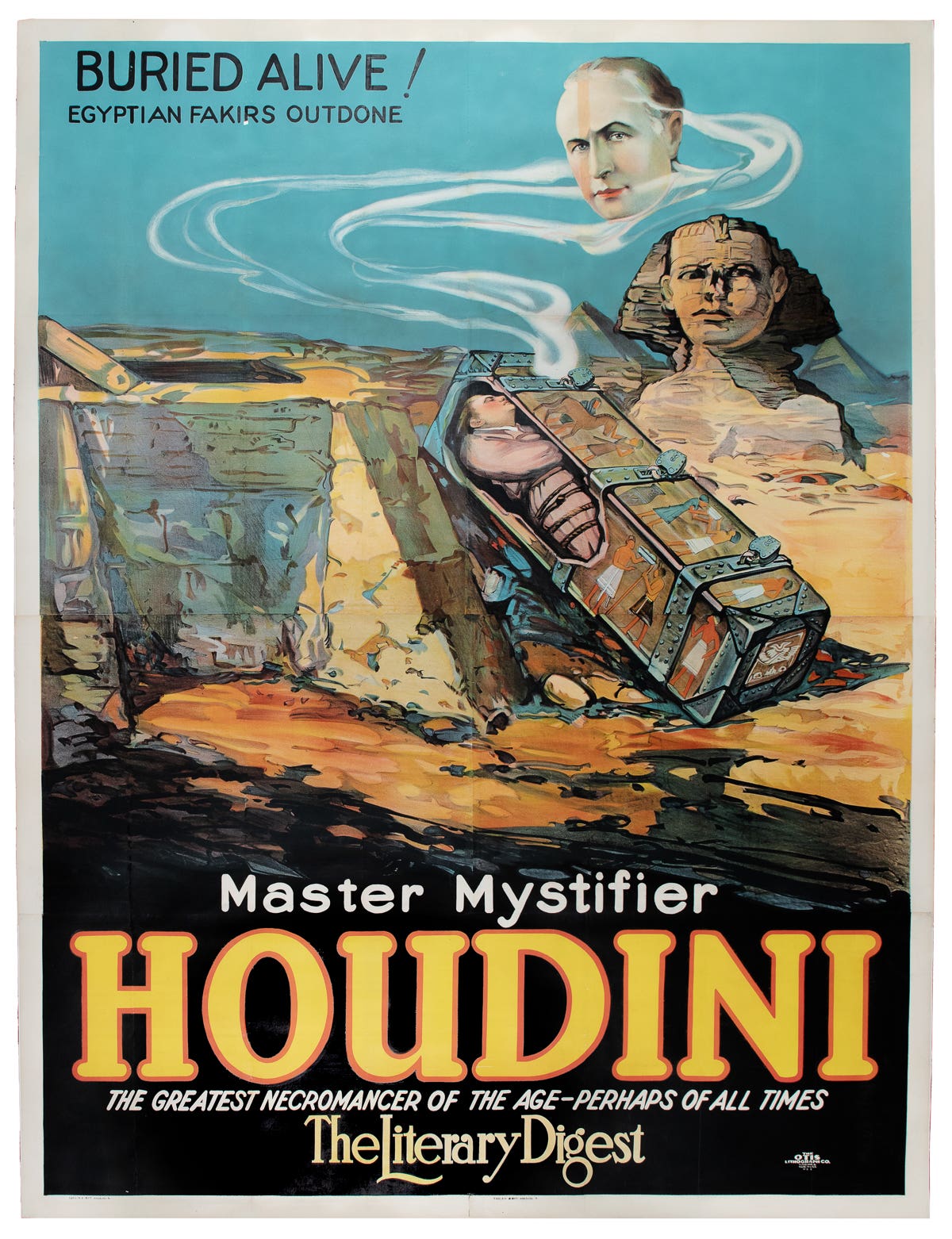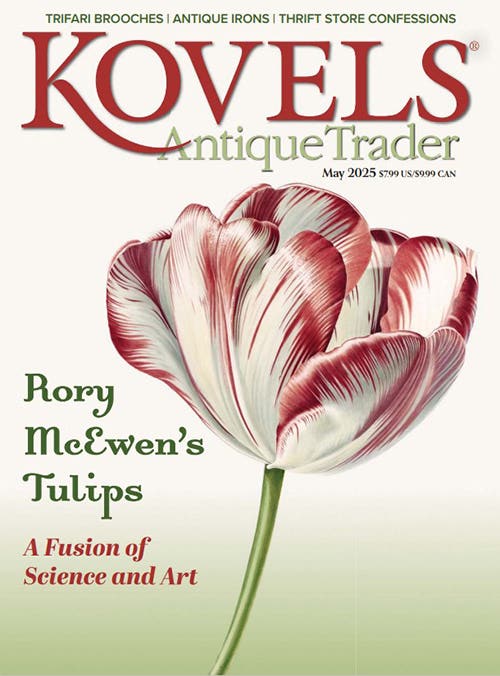WWI collectibles enter the realm of antiques
In light of this year marking the 100th anniversary of the beginning of America’s involvement in World War I, Dr. Anthony J. Cavo sees interest in WWI memorabilia reaching new heights.
By Dr. Anthony J. Cavo
This year will mark the one-hundredth anniversary of the United States’ entry into WWI. A war that had been raging on two major oceans and all across Europe, Asia, and Africa for nearly three years.
WWI Artifacts Coming Into Their Own
It was a war that involved 32 countries from six of the world’s seven continents; a true world war.
In terms of conflict and collectibles, the Civil War and WWII appear to be the favored feuds from which to collect memorabilia. Objects associated with the Spanish American War, WWI, Korea, Viet Nam and later wars are largely under-represented in the collectibles realm. This year, however, I believe WWI collectibles will come into their own. As we mark the Great War’s centennial, these items officially begin entering the category of antiques.
Antiques are, in the broadest sense, and based on the current accepted and legal definition of the word, simply defined as any man-made object that is over one-hundred years old. As comprehensive and inexact as that may be, most antique dealers would agree with this uncomplicated, rather simple definition. The one-hundred-year-old designation used to define the word “antique” is not an arbitrary number; there is a legal basis to this definition within the Smoot-Hawley Tariff Act of 1930. Additionally, the Federal Trade Commission defines an antique as “an item that’s at least 100 years old,” and the U.S. Customs service states that to be considered an antique an item “must be at least 100 years old.”
100th Anniversary Marks Transition
Austria-Hungary declared war on Serbia on July 28, 1914. This occurred exactly one month after Archduke Franz Ferdinand of Austria and his wife Sophie were assassinated in Sarajevo by Serbian nationalist Gavrilo Princip. It wasn’t until April 6, 1917 that the United States entered the war. That makes April 6, 2017 the official date when WWI collectibles officially began the transition from collectibles to antiques.
If you are interested in history and have a desire to begin collecting, now is the time to consider objects representative of WWI. Many WWI items are still readily available at inexpensive prices in flea markets, shops, estate sales, and antique shows throughout the United States, Canada, and Europe. Photographs – especially those printed on postcard stock – are by far the easiest and least expensive of these objects to obtain. If you have the patience to go through stacks of photos in these venues, you will probably discover photographs of doughboys, sailors, marines, ships, camps, armament and even a few period patriotic postcards. Framed photographs of servicemen are also available and usually priced according to the frame rather than the image.
Uniforms and Accoutrements Popular Choice
Acquisition of uniforms in very good condition is a good bet; especially jackets, leggings, belts, patches, and soft
head wear such as sailor and garrison caps. Medals, timepieces, posters, and weaponry are all categories that offer the collector a variety of items from which to choose. As time passes, however, these articles will become more difficult to encounter at affordable prices as war memorabilia has always been popular with collectors.
Photos depicting soldiers performing an activity, even something as simple as eating a meal in a trench are highly desirable.
German uniforms and insignia are more difficult to acquire and usually bring higher prices than their American counterparts. Also pictured above is the image of a WWI German soldier wearing Pelzmuetze (fur cap) with a Eigentumsstück Feldzeichen badge.
Ephemera Great Gateway to Collecting WWI Items
World War One posters are often available for hundreds to thousands of dollars, with American posters bringing premium prices. These posters range in subject matter from military images to the more emotional aspects of war such as civilian casualties. The purpose of these posters was to encourage men to enlist, to recruit nurses, ambulance drivers, or volunteers to work in a variety of industries, to advertise and sell bonds to help finance the cost of the war, and to encourage civilian support for the war.
One of the most overlooked of all World War One collectibles – and probably the least expensive – is sheet music. Sheet music from WWI is usually large and ranges from 9 by 12 inches to 10 by 14 inches. The vast majority of sheet music from this time was lithographed with sharp imagery and vivid colors. In actuality, each is a piece of frameable art. Currently, WWI-themed sheet music can be had for a few dollars up to $30 or $40. However, exceptional pieces sell for twice that amount. I predict there will be an increase in prices for WWI sheet music. However, currently the opportunity to begin a great, inexpensive collection exists and presents a good investment opportunity.
Tuned Into Trench Art
Trench art is another strong area of collection for WWI enthusiasts and is so named as a result of it being made by soldiers in the trenches – although much of it was made by civilians. Trench art can be described as a decorative or utilitarian item typically composed of war waste such as used shell and bullet casings, bullets and other projectiles and made by servicemen, prisoners of war, or civilians. Items such as jewelry, buttons, cigarette lighters, vases, knives, cups, airplanes, lamps, and ashtrays, are among the many examples. Shell casings serve as a perfect form for a vase. The vases, depending on the amount and beauty of the decoration and the inclusion of the name of a village or town, can sell anywhere from $40 up into the hundreds of dollars for better examples.
WWI Transforms Wristwatch From 'Fad' to Functional 'Must-Have'
Perhaps nothing has done more to advance the popularity of the wristwatch as war. During the Boer War (1899-1902), officers strapped pocket watches to their wrists for easy accessibility and to avoid fumbling with them in the trenches. The innovation was considered more a of war-time gadget and did not catch on with civilian men. In an article in The New York Times on July 9, 1916 it was noted that the wrist watch for men was considered a “silly ass fad.”
The roots of the “bracelet watch” boasts duty as a useful piece of feminine jewelry until the Great War when the wrist watch became an essential instrument for British officers who fought a war in which attacks and plans were based on time rather than proximity to the enemy. Officers purchased their own watches according to their taste, which accounts for the variety available to buyers today. Trench watches in silver cases with leather straps were the most popular; many had the latest radium dials, which illuminated the hands and numbers in the dark. With tough men like soldiers and aviators wearing them, wristwatches quickly lost their “feminine” associations. Depending on maker and condition, trench watches fetch $75 to thousands of dollars for quality made pieces.
Appreciating the History Surrounding the Artifacts
I haven’t overlooked the very popular category of WWI weapons as collectibles. Weapons are a specialty unto themselves. They are not something a novice should begin collecting without first being educated about weapons and their proper handling and use. As for WWI weapons collectors, they need no advice from me, as they already know far more about these items than I do. [Shown above is a Colt 1917 U.S. Army issue revolver.] Personal arms such as the Colt seemed to pose the least threat in battle.
The Great War saw many firsts. It was the first time airplanes, airships, tanks, and poison gas came against troops. Rifles, barbed wire, machine guns and heavy artillery killed and inflicted horrific wounds. Thousands of nurses lived in appalling conditions and life threatening situations in order to care for the wounded and dying. Nurses and medics risked their lives in the pursuit of saving others. Whether you are a seasoned collector of WWI antiques, a novice, or someone who is simply interested in history, it is important that we not forget the men and women who gave so selflessly of their time, limbs, and lives in defense of their country and its future generations and to think of WWI memorabilia as more than just antiques, investments, and commodities; they are a tangible reminder of the love, patriotism and sacrifice of countless and unremembered thousands.








